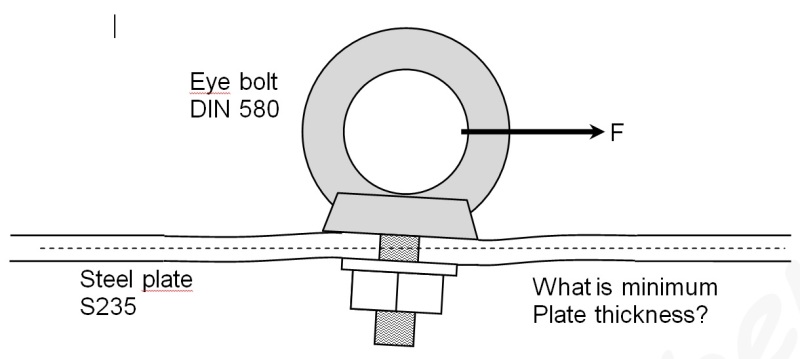Gymnast
Electrical
- Mar 22, 2008
- 22
Dear Sirs
Please see attached drawing.

I am going to use a M12 eye bolt DIN 580. And the force is applied parallel to the base plate. You can find specifications on the eye bolts here:
DIN 580 Eye bolt spec
The WLL for the eye bolt is 1700 N, and normally the breaking strength is 5 times higher eg. 8500 N. How thick should the plate be to support the eye bolt? I expect the force to be applied 30 mm above the plate surface. I suspect that the moment applied to the plate is the critical factor.
I should love to know the solution for this specific question and perhaps in more general terms. I suspect, that limits to the moment on a bolt in a plate is a quite common question. However I am no structural engineer, and I have not been able to find the answer here or by google.
Thank you in advance for your help.
Please see attached drawing.

I am going to use a M12 eye bolt DIN 580. And the force is applied parallel to the base plate. You can find specifications on the eye bolts here:
DIN 580 Eye bolt spec
The WLL for the eye bolt is 1700 N, and normally the breaking strength is 5 times higher eg. 8500 N. How thick should the plate be to support the eye bolt? I expect the force to be applied 30 mm above the plate surface. I suspect that the moment applied to the plate is the critical factor.
I should love to know the solution for this specific question and perhaps in more general terms. I suspect, that limits to the moment on a bolt in a plate is a quite common question. However I am no structural engineer, and I have not been able to find the answer here or by google.
Thank you in advance for your help.

